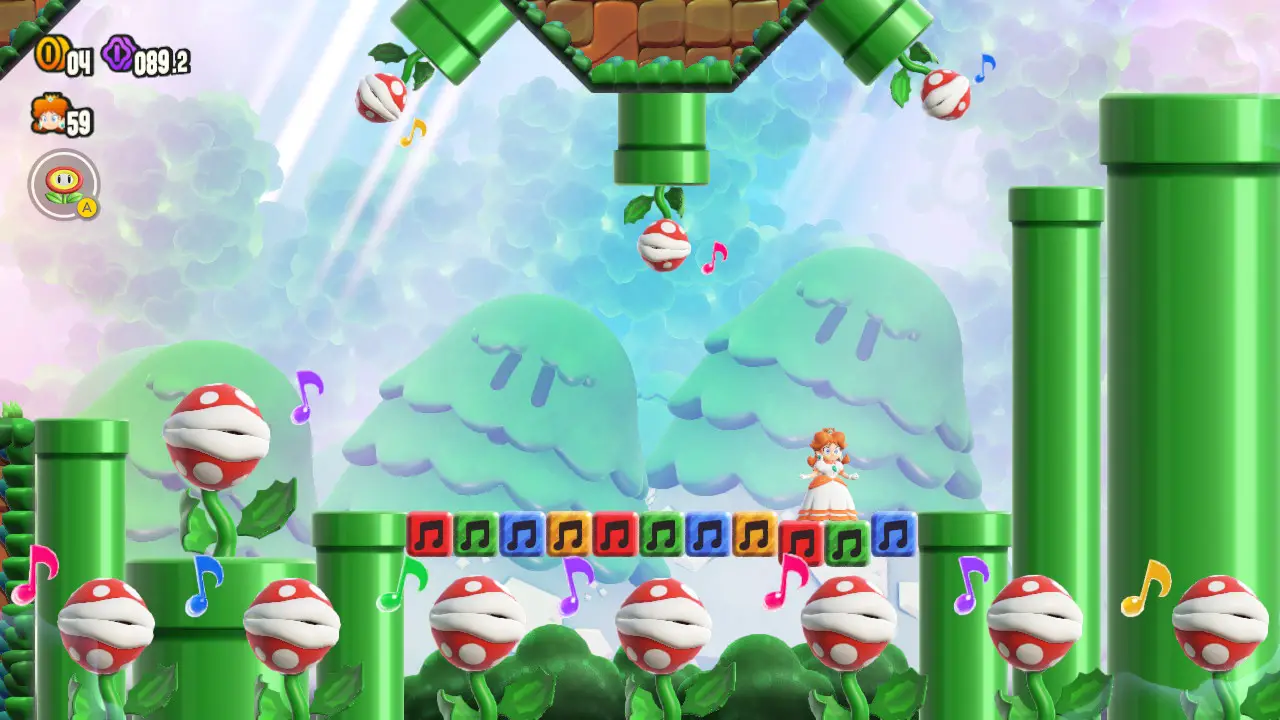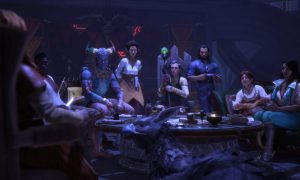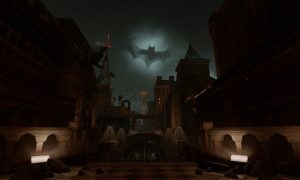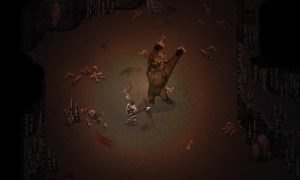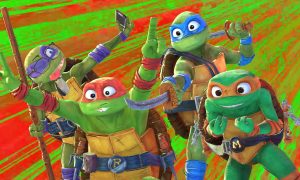Mario is dead.
Just kidding, he’s fine. Super Mario Bros. Wonder revels in surprises like that, many just as lethal for Mario.
While this game in particular emphasizes the element of surprise, people often look to Mario for exactly that. Since their inception, Mario games have captured a sense of imagination with their abstract concepts and plentiful secrets. Mainline Mario games continue to enjoy a reputation for dumping a mountain of creative ideas on players to this day. The quantity and quality of surprises Mario delivers are arguably what make his games so appealing.
People expect surprise from Mario, which creates an interesting dilemma. If you expect a surprise, is it really a surprise at all? I say yes, but the nature of surprise undoubtedly changes when you know one is coming. An unexpected surprise gives you little time to process it. Expected surprise provides your imagination some room to build things up. Wonder acknowledges the expectations that come with expected surprises, and perhaps more notably, the expectations that come with being a game known for expected surprises.
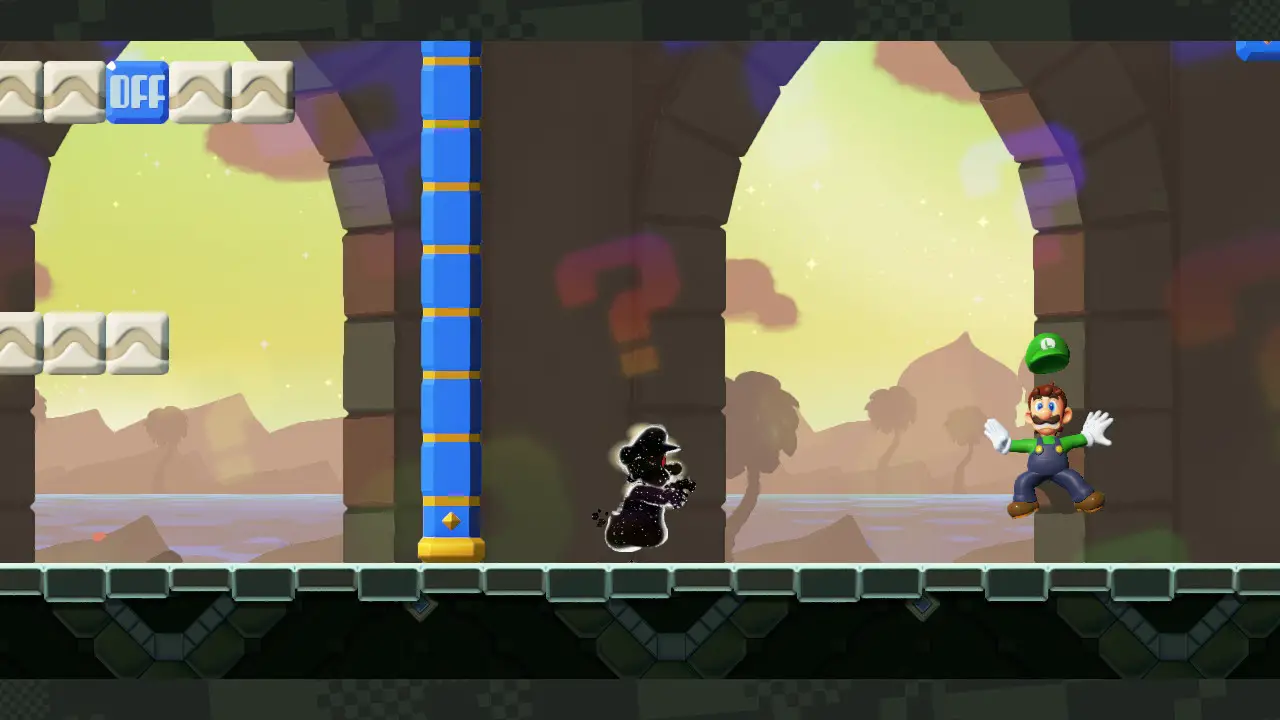
Surprising people poses a challenge in a series as deeply rooted in the world of games as Mario. On paper, nothing about Mario makes sense and everything feels unexpected. With enough exposure to Mario’s radioactive fun rays, nothing phases you anymore – you know the methods to his madness.
The New Super Mario Bros. series demonstrates this perfectly. If you were to play a New Super Mario Bros. game in a vacuum, removed from playing any other Mario game in your life, you’d probably find it to be a surprising and delightful game. If you play more than one of them, or perhaps all of them, and especially if you played every other Mario game too, you’d likely find them to be overly familiar, if perhaps still a little delightful. The impact of any individual “new” New Super Mario Bros. game gradually lessens the more you know about Mario.
Rather than hiding from the reality of Mario games becoming a known quantity, Wonder faces it head-on. Wonder does not betray established Mario conventions so much as it uses them to its advantage. It is a 2D Mario platformer that gets the exact same things right that its predecessors got right. Mario and his small army of pals move with the same carefully measured controls and abilities as the New Super Mario Bros. games. Each level complements these controls with level design that laser focuses on a small handful of ideas that often allow for a wide variety of solutions. Add in some optional collectible coins to incentivize exploration of the levels, and you’ve got a tried-and-true Mario game. This basic framework maximizes fun while minimizing frustration.

Wonder breathes new life into that established framework. It paints over the standard Mario look with a brand new sculpted, clay-like art style that conveys more details than prior side-scrolling Mario games. Animations of your character and the enemies emphasizes their reactions to each other and the environment. Theoretically these touches add personality to the characters, too, but then you have to start asking difficult questions that rub up against the purposefully undefined nature of Mario, like what the heck Mario’s personality is supposed to be in the first place.
In terms of game mechanics, the Wonder Flowers take center stage as the game’s defining new concept. Sometimes placed unavoidably in your path and other times hidden, touching one of these flowers transforms the level into something full of wonder. They are, for all intents and purposes, the “surprise” that Mario inherently promises his playerbase, taken to its most extreme form. Whereas the scope of prior Mario surprises were never strictly defined, Wonder Flowers always go big.
Dramatic surprises appear again and again in a constant assault of ideas. Objects in the level become sentient, your perspective changes, Mario transforms into a goomba, hippos take you to space, and much, much more. The Wonder Flowers keep you on your toes and give you something to consistently look forward to. A sense of anticipation builds as you go through a level, experiencing its initial “gimmick” only to wonder how the “Wonder” version of the level will look. Most Wonder Flowers met my expectations, but the best far exceeded them by taking things in a direction I never expected.
Some of the Wonder Flower effects may actually be too good. Wonder’s levels fly by at a relatively brisk pace normally, and the Wonder sections usually only make up a small section of them. In a way, that works towards the game’s strengths. It ensures you barrel through the game’s barrage of ideas and makes each Wonder feel like a special event. A few times, however, I encountered an idea that felt like it could, or perhaps should, have been the baseline for the level as a whole, rather than its snappy conclusion.
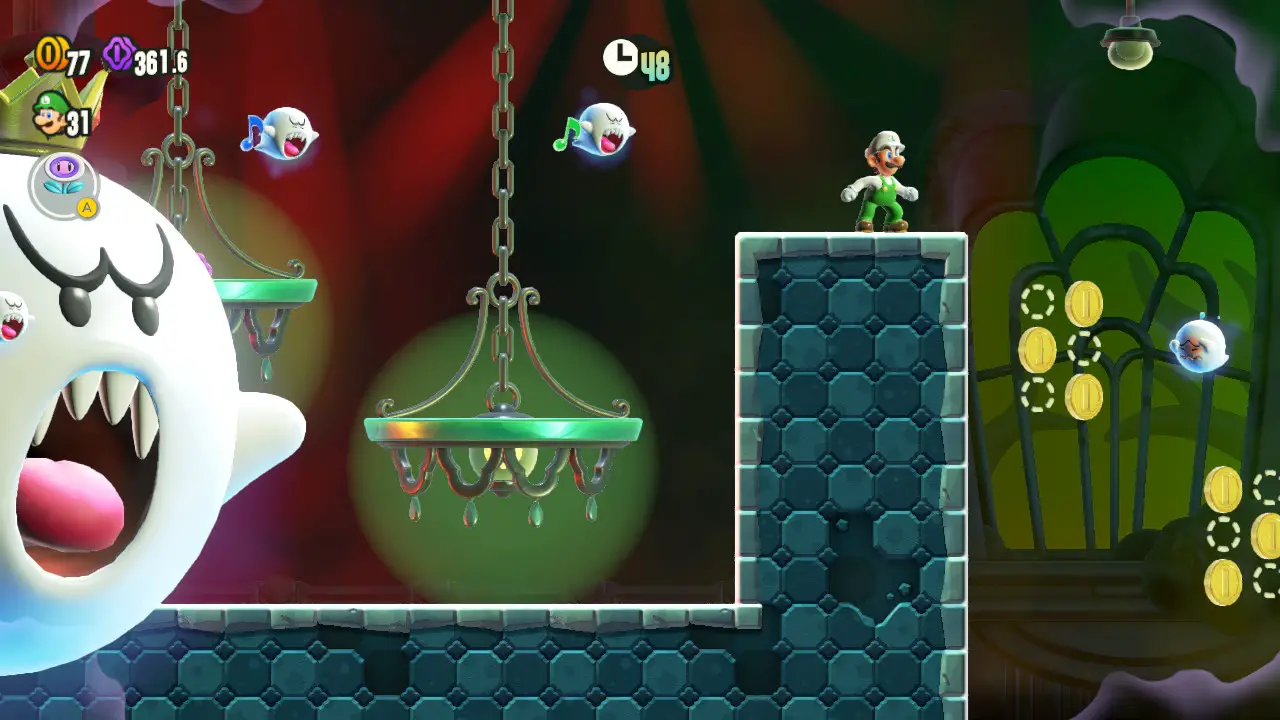
In that way the Wonder Flowers come across as more of a framing device than a genuine innovation. The “Wonder” sections likely would have been the entire core of the level in other Mario games. Some of these Wonder ideas actually have been before.
By separating these ideas out and turning them into mystery boxes you actively opt into, they essentially give each level an extra chance to leave a strong impression. That opportunity just comes at the cost of fully exploring the extra concepts they introduce. A few Wonder twists do return for encores, but given that their entire purpose is to surprise you, that can be disappointing in its own way. Mario risks getting burned no matter what he does with these Wonder Flowers!
Although the Wonder Flowers open the door for seemingly endless possibilities, they do convey a sense of cold logic that I find difficult to ignore. What’s that? Video games are magical and fun? They convey senses of joy and wonder? Not on my watch! Time to ruin Mario and possibly video games in general.
In order to accommodate their avalanche of game ideas, Mario games often follow a fairly well-documented formula to ensure the most fun per player. It’s not an exact methodology, but a common basic outline they use involves introducing a new idea, iterating on it, and eventually, twisting it to surprise the player. It’s a pretty sensible way to design a game, and many games outside the Mariosphere follow similar blueprints.
Wonder is no exception. A Wonder level may focus on a specific new enemy type, escalate the challenges it uses the enemy for, and then the “Wonder” twist may literally transform you into the enemy now that you understand how it works. Not every Wonder Flower adopts that philosophy strictly, but many of them do. In fact, I’d say that the best ones do. The small handful of levels that stray away from the initial stage idea entirely usually feel lesser, like the existing level annexed some random part of another one to the benefit of neither.

By placing so much emphasis on the unexpected, Wonder occasionally reveals the clash between surprise and Mario’s more calculated design sense. Nintendo’s developers may follow effective formulas to appease as many people as possible, but it’s usually not something that actively hinders the fun or surprises. Perhaps due to the overt theming of the game, the underlying tension now feels palpable.
Well, that and some uninvited guests keep drawing attention to it. Wonder features strange talking flowers littered throughout every stage of the game. They make comments, give hints, and tell jokes. On the surface, you may excuse their presence as some wacky oddity in a game all about such things.
I know Nintendo, though – better than I know myself. These flowers do not appear so consistently or prominently just to be fun. They serve a genuine purpose. I suspect that the mad scientists working day and night in the Nintendo “Fun Dungeon” created these creatures for the same reason characters constantly mumble to themselves about what’s going on in your favorite modern big-budget video games. Some focus-testing data somewhere likely shows that hearing people talk keeps you focused and engaged with what’s going on in the game. The things they actually say matter little.
The flowers’ presence does not represent some inexcusable sin, of course. You can actually turn them off completely if you want. Rather than turning them off, I preferred to turn them German.
Still, their existence emphasizes Nintendo’s commitment to crafting their games in a way that the largest number of people can experience the largest objectively measurable amount of fun with. You can similarly feel that commitment in how the online removes the ability for players to directly interact, the game’s compulsive need to tell you how to access your map in case you get lost as if that were a genuine possibility, and the generally low difficulty of the game that can further be lowered in a variety of ways.
Super Mario Bros. Wonder wants to constantly surprise you; it also never wants to make anyone too uncomfortable. Rather than going all-out and becoming something truly bizarre, then, Wonder purposefully restrains itself with many mainstay Mario conventions and player accommodations. The end result works fine enough, it just runs contrary to the game’s primary concept.

Wonder’s mixed nature carves out a unique place for it in Mario’s history. We actually already have Mario games that totally ignore established conventions and run wild with relatively unrestrained creativity. They’re called Super Mario Land and Super Mario Land 2, games made before players or even the developers themselves had strict expectations for what a Mario game should be.
The latter game in particular specifically aimed to avoid established Mario conventions, much in the same way Wonder appears to. If you compare Land 2’s approach to attacking conventions with Wonder’s, I don’t believe it’s a particularly close call to say Land 2 was bolder in its endeavors. I mentioned that Wonder features hippos taking you to space earlier, and that zany idea was likely inspired by a similar sequence of events in Land 2, which sums things up rather succinctly. Even if not a direct reference, the similarities demonstrate just how difficult it can be to come up with something totally unheard of for Mario.
Rather than assaulting conventions, Wonder embraces and works within them. It contains the best parts of the New Super Mario Bros. games and then takes them one step further. It injects the familiar with some much needed pizazz.
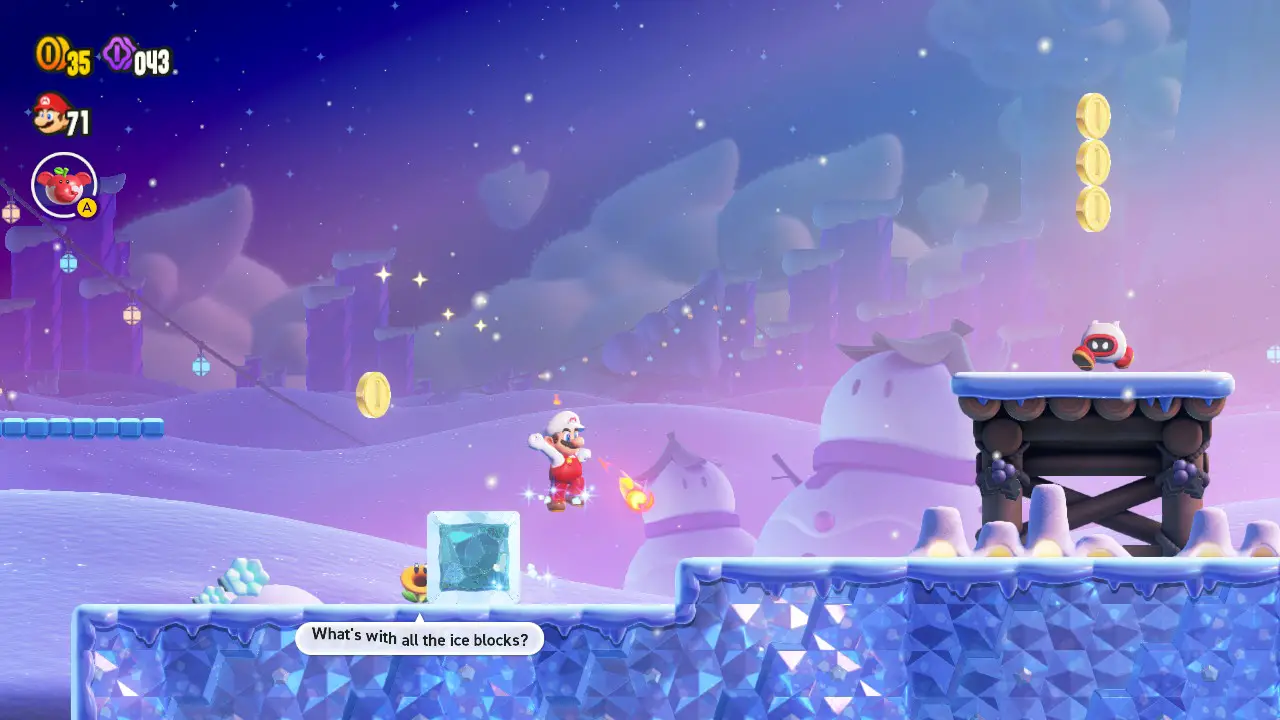
Wonder introduces plenty of new things beyond just the Wonder Flowers. It features probably the largest concentration of new enemies in a 2D Mario game since the 1990s. Even the returning mainstay enemies like Goombas and Piranha Plants feel refreshed thanks to the more detailed animations and occasional new variations you encounter. When you play so many of these games, it can become difficult to see the enemies as anything more than gameplay contrivance – especially the frequently used ones. One of Wonder’s biggest successes lies in its ability to make the Mario enemies feel like actual creatures again.
New power-ups like the Elephant and Drill forms similarly keep the main characters themselves fresh. They all serve specific purposes and avoid feeling like retreads of things Mario has done before. I particularly enjoy how no single power-ups dominates the others in this game. Wonder lacks a clear “best” power-up that allows you to invalidate most of the game’s biggest challenges like the flying power-ups tend to do in other Mario games.
Admittedly, as a Mario scholar the elephant form disturbs me. Mario power-ups traditionally style themselves more along the lines of suits that the characters wear, so I don’t know why they literally become elephants in this game. Seems wrong…unless the Elephant is just a very lifelike body suit? That almost sounds worse to me, so I’ll just have to accept the Elephant at face value.

Badges bestow the most interesting shake ups to the gameplay. Like power-ups, they add new functions to your characters. Unlike power-ups, they are always available and can be swapped out in between levels. Many badges invoke past Mario abilities like Luigi’s scuttle jump or the crouching high jump from Super Mario Bros. 2 (of the Doki Doki Panic variety). The wide variety of abilities and effects offer flexibility in how you speed through levels, or even give newer players an edge if needed.
Similar to the Wonder Flowers, I like the badges enough that it disappoints me how underutilized some of their ideas are. Only a handful of levels feel crafted to be extra fun with specific badges; in most others, the badges are powerful enough that they might as well be interchangeable. It kind of feels like picking a variation of how you want to cheat. Individual Badge Challenges help fill the void to an extent, but even then most of them function more as tutorials rather than genuine explorations of the game mechanics.
Wonder litters its world with a ton of extra smaller challenges along those lines. Proper levels don’t last long already, yet I still appreciate having something even less committal to break things up. You don’t always want to play Mario worrying too much about finding secrets or all of the collectibles, and these smaller levels give a nice reprieve from those concerns.
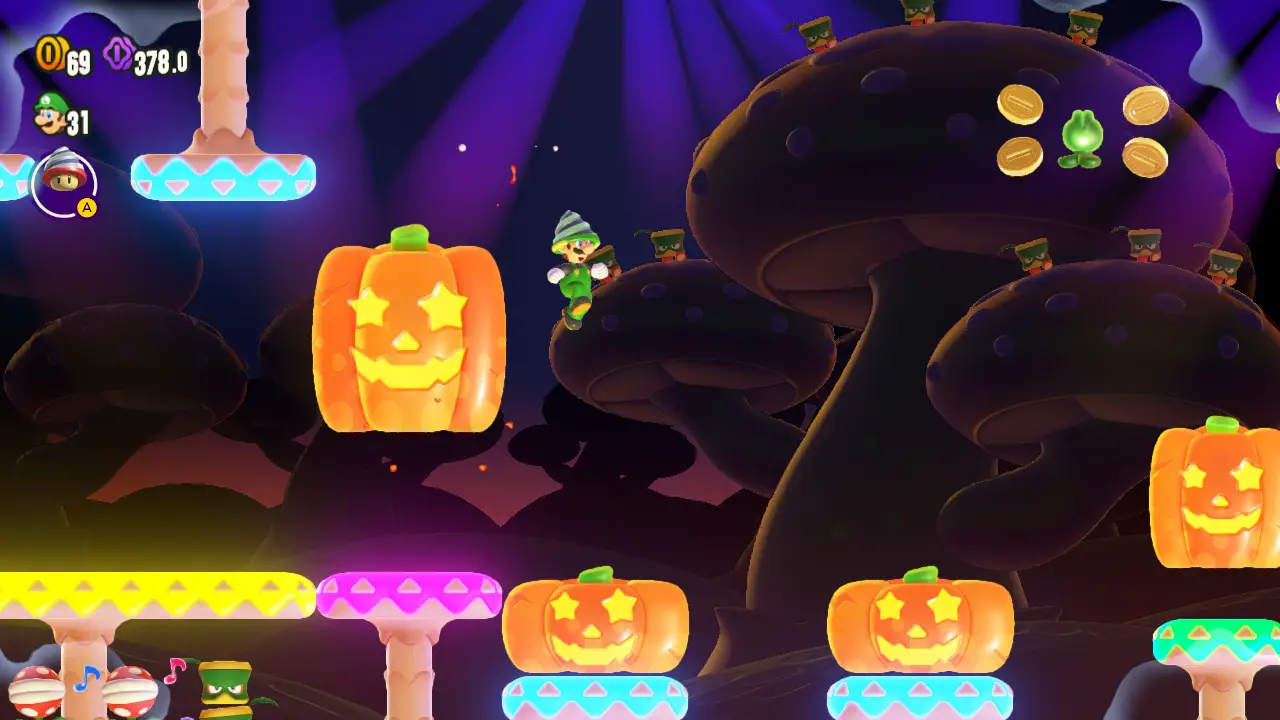
While every other aspect of the Mario experience feels noticeably pushed forward, the boss fights stand in stark contrast. They lack creativity, and there are barely any in the game. I highly doubt that all of Nintendo’s greatest minds got together and the best that they could come up with were variations on that Super Mario Bros. 3 turtle that waddles back and forth and rolls around in his shell when you jump on him. Yet somehow, that’s pretty much what Wonder delivers. These boss fights have such little presence in the game that some worlds will skip them and instead provide some paper-thin narrative excuse for why you can progress the game anyway.
Speaking of: although I hesitate to lay down any particular laws about how a game should be, I do think that the amount of dialogue and exposition in your story should be roughly proportional to how serious you are about telling a story that requires those things. Wonder talks at you an awful lot for a game where magic flowers cause wacky things to happen and you need to stop Bowser from being a giant castle. These flower and caterpillar people talk and talk while saying absolutely nothing of interest. There is no real story here, there is no worldbuilding, so I’m not sure why the game insists on the charade.

You might think to yourself “hey, it’s Mario, who cares about the story?” Well, I could, if it were interesting. Actually, I do anyway, because it frequently slows the game down. Every world contains at least one mandatory stage where you go into some flower guy’s house and let him yack at you for a bit. I get the impression that because the aesthetic of the game aimed to revitalize Mario’s world, someone felt the story should follow suit. Whatever the developers attempted to do here does not try nearly hard enough to justify all the time spent on it.
Outside of the unexciting bosses and an odd focus on narrative, Super Mario Bros. Wonder shows little weakness. Really, when my complaints mostly boil down to “I wish there was more,” that says it all. That shouldn’t be surprising – it’s a Mario game, after all. You expect it to be good. You expect it to surprise you. Wonder meets those expectations in its own surprising yet expected way.
Jack's background is in law, but he's been writing about games since long before that. He aims to capture a game's essence in (hopefully) new and interesting ways with his writing. Occasionally he will even make his articles fun to read. Results vary on that. Talk to him about Mega Man! Preferably not in the third person!

Mario is known for surprising you with new ideas and strong game design. Super Mario Bros. Wonder contains both in spades. Although it executes on the element of surprise in a way I hesitate to call an outright innovation, it always supports the strengths of both the expected and unexpected.
PROS
- Strong game design Mario is known for
- Lots of new and fun ideas
- Fresh aesthetic
- Badges and level variation shake up
- Makes you wish for more
CONS
- Sense of wonder is occasionally undercut by convention
- Boss fights do not match the rest of the game’s creativity
- No story to tell yet far too much to say
See below for our list of partners and affiliates:
